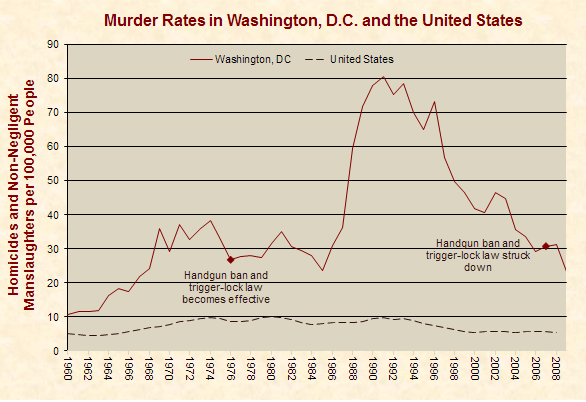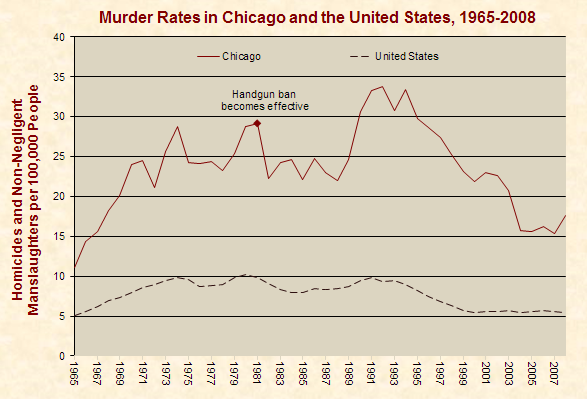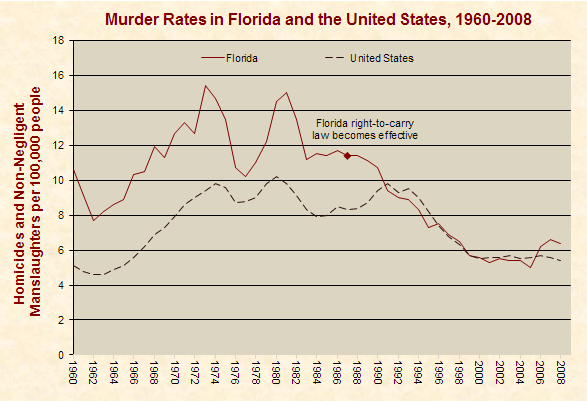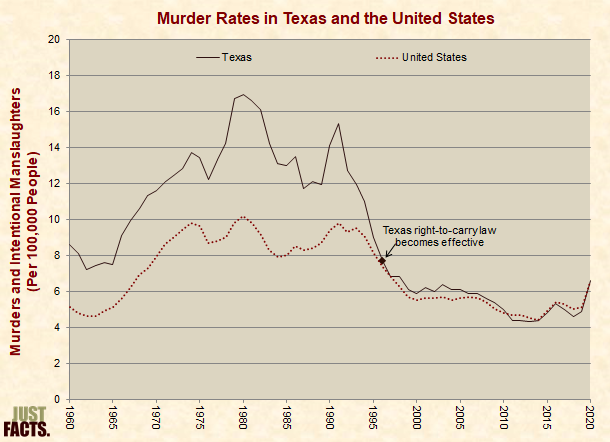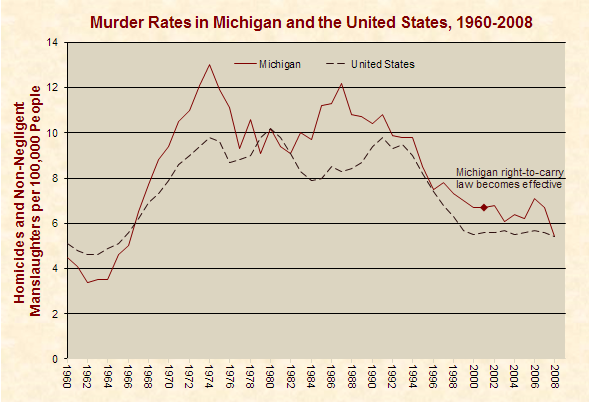Two simple changes to U.S. law, both things based in other laws that we already know and like, could solve most of America’s gun violence problem:
Treat all semi-automatic weapons in a similar way under the same laws as fully-automatic weapons.
Regulate gun ownership and usage the same way we regulate car ownership and usage.
Here’s the backstory and how each would work:
Semi-Automatic Weapons
Back in the prohibition era, before and during the time John Dillinger and friends were shooting up American cities from New York to Chicago to San Francisco, the National Rifle Association approved of two very consequential laws that restricted gun ownership and use. (The NRA didn’t become a lobbying and promotional front group for the weapons industry until the 1970s when the Supreme Court’s Buckley v. Valeo decision ruled that the #MorbidlyRich and wealthy gun-manufacturing corporations could legally buy and own their very own politicians. For nearly a century prior to that, the NRA supported rational gun control.)
The Uniform Firearms Act of 1931 in Pennsylvania was the harbinger of the federal 1934 National Firearms Act, which brought an end to the widespread legal availability of fully automatic “tommy guns,” along with, later, silencers and sawed-off shotguns. But ownership of such automatic weapons isn’t really “banned”—it’s just a somewhat complex process to get permission to own and use them.
First, you must find a local law enforcement officer who will vouch for you and perform a background check on you. His or her signature is the necessary first step to getting an Automatic Weapons Permit, and you must have an absolutely clean record, from a clean criminal record, to not owing any child support, to not having any past firearms violations. If you lie about this, or apply for your permit through a “clean” third party, you and your third-party could both end up in jail.
Then you need to pull together two sets of your fingerprints and two passport-type photos. Plus the $200 “tax stamp” fee for the permit. And get all the information you’ll need on the gun you want to buy, including its serial number and details on its last owner.
Finally, you need to fill out an OMB No. 1140-0014 Application for Tax Paid Transfer and Registration of Firearm form, with such easy questions as category 14:
1. Are you under indictment or information in any court for a felony, or any other crime, for which the judge could imprison you for more than one year?
2. Have you ever been convicted in any court for a felony, or any other crime, for which the judge could have imprisoned you for more than one year, even if you received a shorter sentence including probation? (See definition 1m)
3. Are you a fugitive from justice?
4. Are you an unlawful user of, or addicted to, marijuana or any depressant, stimulant, narcotic drug, or any other controlled substance?
5. Have you ever been adjudicated as a mental defective OR have you ever been committed to a mental institution?
6. Have you been discharged from the Armed Forces under dishonorable conditions?
7. Are you subject to a court order restraining you from harassing, stalking, or threatening your child or an intimate partner or child of such partner?
8. Have you ever been convicted in any court of a misdemeanor crime of domestic violence?
You also have to provide the government with the reason why you think it appropriate for you to have a fully automatic weapon, sawed-off shotgun, or other “destructive device”:
13. Transferee Necessity Statement: I ___________, have a reasonable necessity to possess the machinegun, short-barreled rifle, short-barreled shotgun, or destructive device described on this application for the following reason(s) ________________ and my possession of the device or weapon would be consistent with public safety (18 U.S.C. § 922(b) (4) and 27 CFR § 478.98).
Karl Frederick, the NRA’s president back when these laws were put into place, was enthusiastic. “I have never believed in the general practice of carrying weapons,” he said. “I think it should be sharply restricted and only under licenses.” When asked if he thought the National Firearms Act of 1934 violated a person’s Second Amendment rights, he famously said, “I have not given it any study from that point of view.”
The result of the restrictions on ownership of fully automatic weapons (and other “destructive devices”) has been that they’ve pretty much vanished as the scourge on public safety that they were in the late 1920s and early '30s.
Thus, it’s rare that either automatic weapons or the less-efficient-at-killing-lots-of-people revolvers and bolt-action rifles are used for mass murders. This is largely because the former are hard to buy/own, and for the latter the time necessary to re-cock and re-load presents victims an opportunity to stop a mass shooting.
Remember, the only reason the shooter who tried to kill Congresswoman Gabby Giffords was stopped after “only” killing six people was that he had to replace his 33-shot magazine with a fresh one, and Bill Badger, a 74-year-old man standing near him (whom he’d just shot), tackled him and held him to the ground.
Thus, as the volume of production of semi-automatic weapons has increased in the past 30 years or so, and their price has come down, the older-fashioned pistols and bolt-action rifles have been replaced by a more recent generation of semi-automatic pistols, rifles, and assault weapons.
But if most handguns in circulation were revolvers, and most rifles were bolt- or break-action, there would be far fewer (or at least far less deadly) mass shootings.
Revolvers typically have a cylinder that holds from 5 to 10 rounds of ammunition, and each chamber in the cylinder must be individually loaded. While there are autoloaders and other ways to speed up the process, the gun is still largely limited, at least in an “active shooter” situation, to the rounds in its cylinder.
With a single-action revolver, the gun can’t even be fired until it’s cocked by pulling back the hammer (although a double-action revolver will accomplish this with the first part of the trigger pull).
Revolvers are very efficient killing machines, having been in widespread use since their popularization by the Colt Company in the 1830s, but while they’re great for sport and self-defense (and were police weapons of choice just up until the past 30 or so years), for mass killings they can’t hold a candle to semi-automatics.
Semi-automatic pistols are, in their modern form, a creation of the last century. They use the recoil force of a shot (some also use the exhaust gases) to load a new round into the chamber and cock the gun, all in one seamless and nearly instantaneous motion.
As a result, semi-automatics can be fired as fast as one can pull the trigger, and the amount of trigger pressure a revolver would require to cock the hammer is unnecessary. And, because they don’t have a built-in cylinder like a revolver, the magazine in a semi-automatic that stores the ammunition (some as large as 50-shots) can be quickly replaced.
The rifle side of the equation is largely the same; while bolt-action rifles don’t have a cylinder, they do require the shooter to pull back the bolt between shots, which ejects the spent shell, inserts a new one, and re-cocks the weapon itself. Variations on this include lever-action and pump-action rifles or shotguns, although all require action by the shooter between shots.
Semi-automatic rifles, on the other hand, like semi-automatic pistols, use recoil or gases to reload and recock the weapon, so that shots can be squeezed off as fast as the shooter can pull the trigger. And, because – like semi-automatic pistols – they have quickly replaceable magazines, they’re far deadlier than bolt- pump- or break-action rifles.
Since the vast majority of mass murders of the 1930s were accomplished with fully automatic weapons, tightly regulating who could buy and own them pretty much removed mass murders from the streets of America. It’s time to do the same with semi-automatic weapons, which are the new mass killers’ weapon of choice.
All it would take is amending the National Firearms Act to put any semiautomatic gun of any sort under the same sort of oversight and permitting necessary for fully automatic weapons.
What We Learned From Cars
While there were a number of automobile manufacturing companies in the late 19th century, it was really at the turn of the 20th century that cars became a hot commodity in the United States.
R.E. Olds (I used to live in and run a business out of his mansion in Okemos, Michigan) rolled out the first assembly line in 1901, but it was Henry Ford who cranked the popularity of cars up a notch with his “first version” of the Model A in 1903, and then developed the assembly line to crank out the Model T in 1908.
By 1927, around the time he rolled out the “second version” of his Model A, he’d sold over 15,000,000 cars.
So it was that, around 1915, many states began to notice that cars were killing people. They were being hit on the roads, dying when drivers didn’t know how to avoid running into trees or off bridges, and in accidents with horse-drawn carts and other automobiles.
Which presented the lawmakers of most states with a serious question: What to do to protect the public, including the car owners, from the dangers of death and disfigurement that cars presented?
The answer that most states came up with, and has now largely been standardized across the U.S. and most of the world, was a very simple and straightforward three-part criterion for car ownership and operation.
Establish ownership. In order to be able to manage all the cars coming onto the roads, both as valuable pieces of theft-worthy hardware and to track liability issues, all cars were required to have a Vehicle Identification Number (VIN), which was stamped onto the car during manufacture and followed it until the day it was destroyed or decommissioned. Similarly, the owner of that car and its VIN had to present himself to state authorities and sign a title of ownership, which had to be recorded with the state whenever title was transferred to a new owner.
Prove competence. By the years around 1915 there had been so many fatalities and serious injuries attributable to cars that the states decided they only wanted people driving on public roads who actually knew how to handle a car properly. This meant defining rules for the road, having people learn those rules, and testing them – both in writing and practically in person – to show they truly could drive safely. When people passed the tests, they were given a license to drive.
Require liability insurance. Because virtually all car accidents were just that – accidents – most people who “caused” accidents were at both financial and legal risk. Many were fine, upstanding citizens (in fact, because cars were expensive, most car owners fell into this broad category). And they wanted some defense against the chance of making a mistake and ending up in jail or broke because of lawsuits or the liability costs of caring for people they’d injured. What came out of this was the development of automobile liability insurance, and the establishment of a requirement for it to be carried by all owners/drivers. While most states adopted this requirement substantially later than 1915, it’s now established as a fundamental part of the three steps necessary to drive a car.
Which brings us to today.
These three things that we do for owners of cars are perfect to deal with our American gun problem.
Registration and title – as a requirement rather than an option – would establish a clear chain of custody and responsibility, so when people behave irresponsibly with their guns they can be held to account.
Having a shooter’s license be conditional on passing both a written and a shooting-range test would demonstrate competence and also insert a trained person into the process who could spot “off-kilter” people like the Parkland shooter. Taking a cue from most other countries, we could also require people to prove a need or sporting/safety use for a weapon.
Today, if a car had run down mass-shooting victims, their families would be getting millions from Geico, et al. Because a gun killed them, they get nothing. This is bizarre in the extreme; we all end up paying the costs of gun violence.
These three steps are nothing but common sense, and don’t infringe on the “rights” of gun owners any more than they infringe on the "rights" of car owners. They could even provide a stream of revenue for gun-owners’ organizations that chose to train people to prepare for their licensure test, and/or offer low-cost liability insurance.
Learning From Others
Just like most Americans have no idea that every other developed country in the world has already figured out how to inexpensively and efficiently provide health care for 100 percent of their citizens as a right, so too, most Americans have no idea how all the other developed nations of the world have managed to keep their gun-deaths-per-100,000-people below 0.5, while in the USA it’s over six people killed with guns per 100,000 citizens.
But other countries have done it, and we can learn a lot from their experience.
This is largely the path Australia has taken. After a decades-long series of mass gun-shootings culminated in the 1996 Port Arthur massacres, that nation, in a moment of collective revulsion, chose to require a license to own virtually any type of gun, and to make semi-automatic pistols and rifles as tightly regulated as fully automatic ones.
They also put into place a series of national amnesty and gun-buyback programs, which pulled hundreds of thousands of now-illegal guns out of circulation in that country, while appropriately compensating former gun owners.
It’s still relatively easy for hunters and sportspeople to get pistols or rifles. All they have to do is prove that they are who they say they are, pass a background test, and then prove on an ongoing basis that they’re actually using their weapons for sport, at least annually.
Since the implementation of these laws in 1996, Australia has not yet had another mass shooting incident. In the first years after the laws took place, firearm-related deaths in Australia fell by well over 40 percent, with suicides dropping by 77 percent.
And it's not just Australia. Every other developed or developing country in the world has more stringent gun control laws than the United States. Which may be why no other such country has the horrific rate of gun deaths and mass shootings we regularly experience.
None of these solutions is difficult. We’ve done them all before in other venues (like car ownership and fully automatic weapons) and they’ve worked fine, and every other developed country in the world has successfully applied them to guns.
We can, too. All it takes is for the NRA to get out of the way, or for American politicians to gather together the courage to stop taking the NRA’s money.
Thankfully, the young people of Parkland, Florida, are doing everything they can to make that happen. They deserve our support.




























